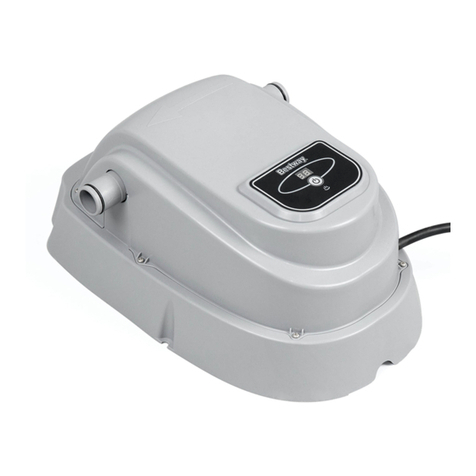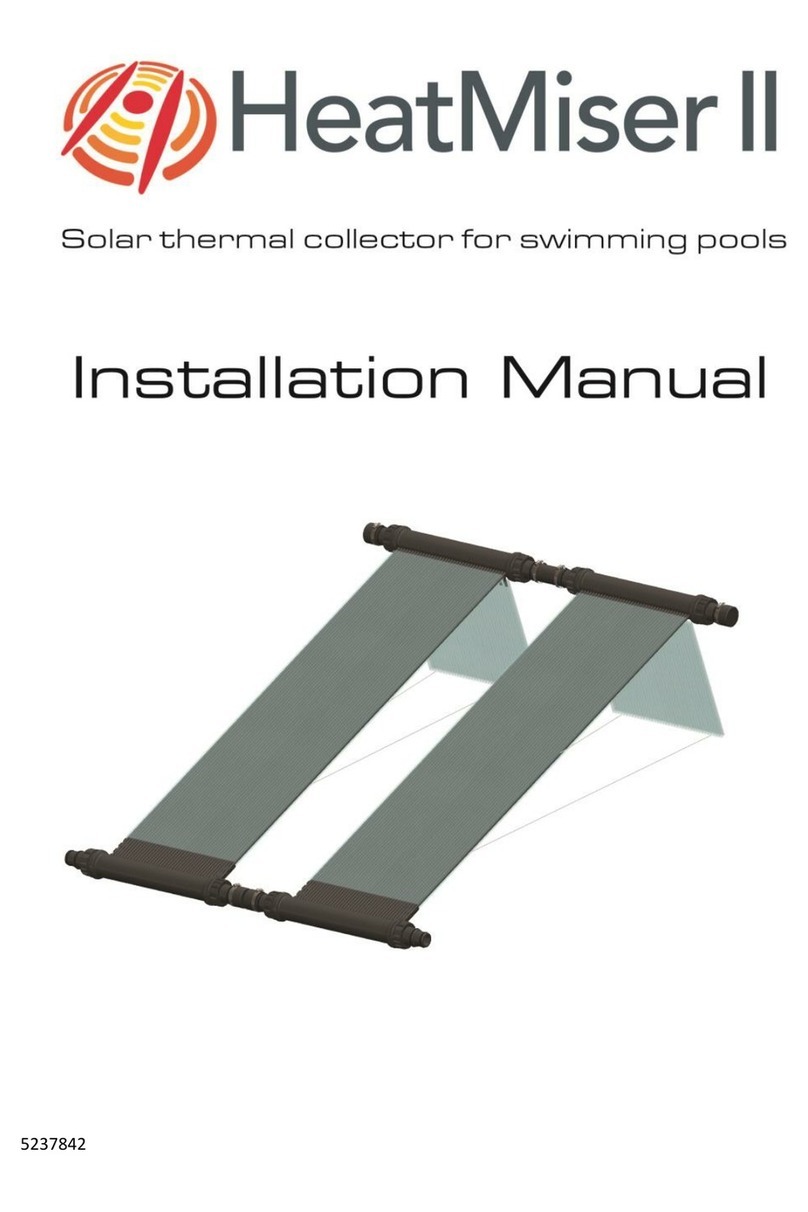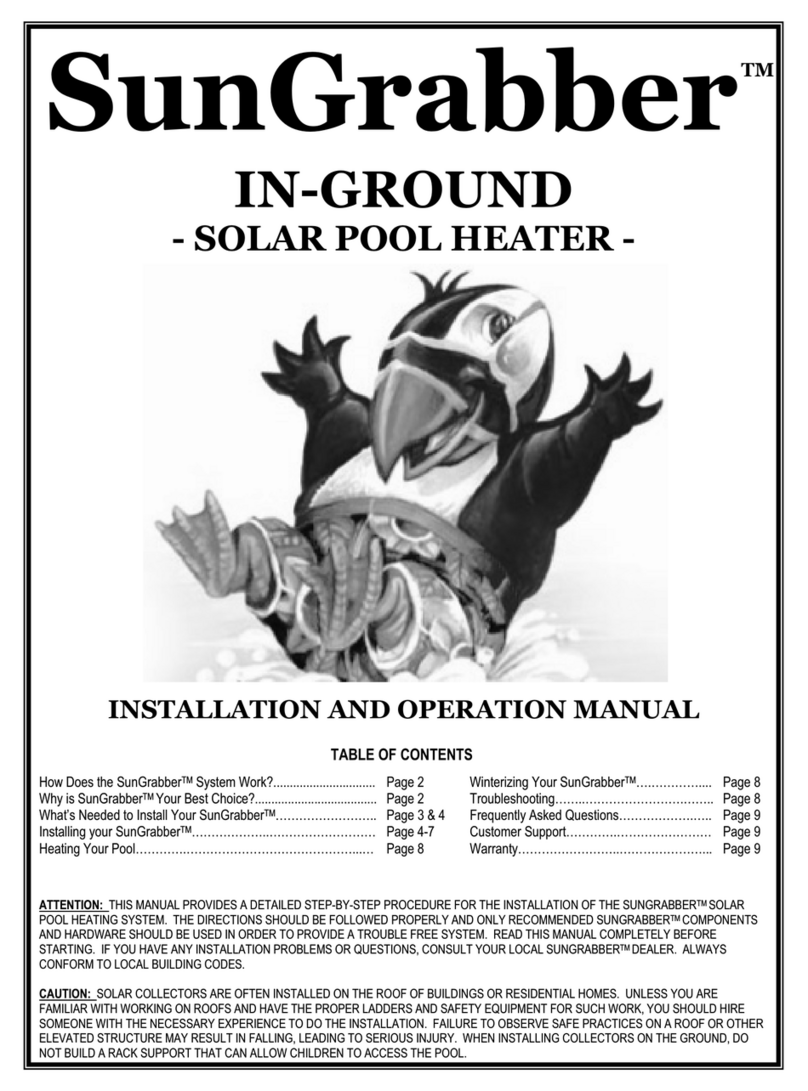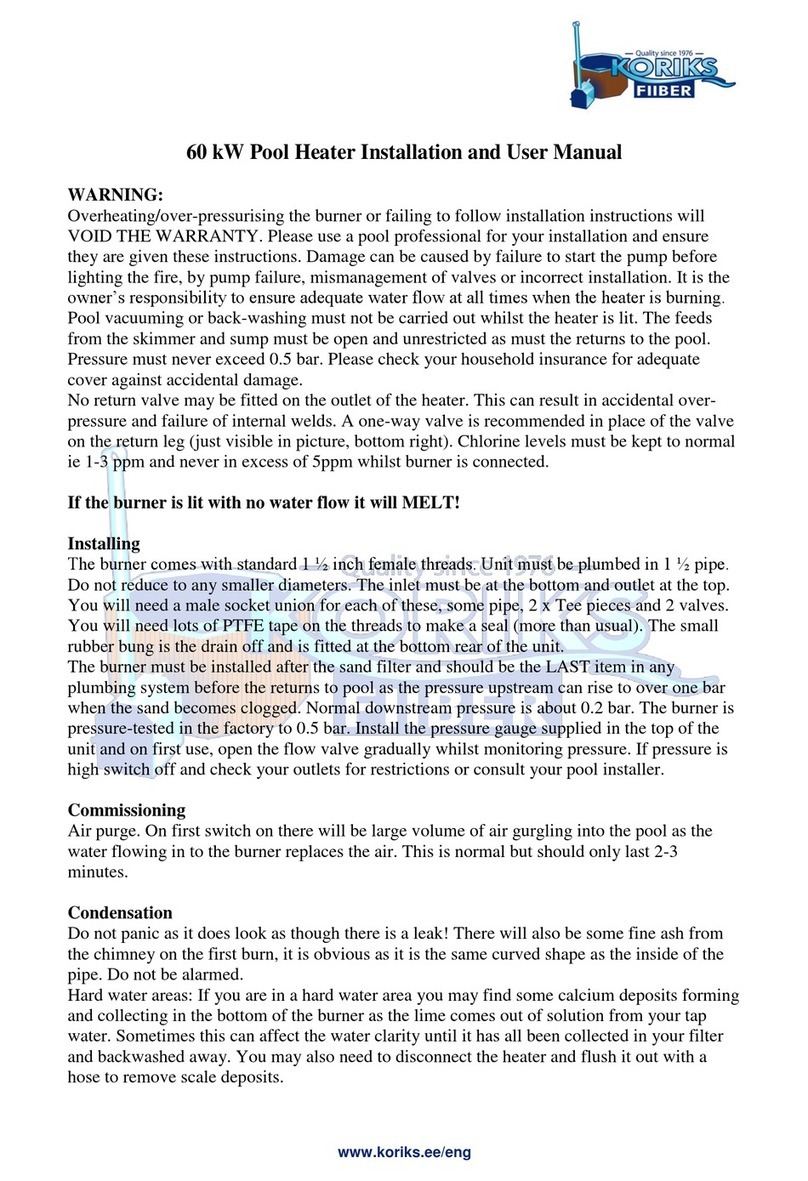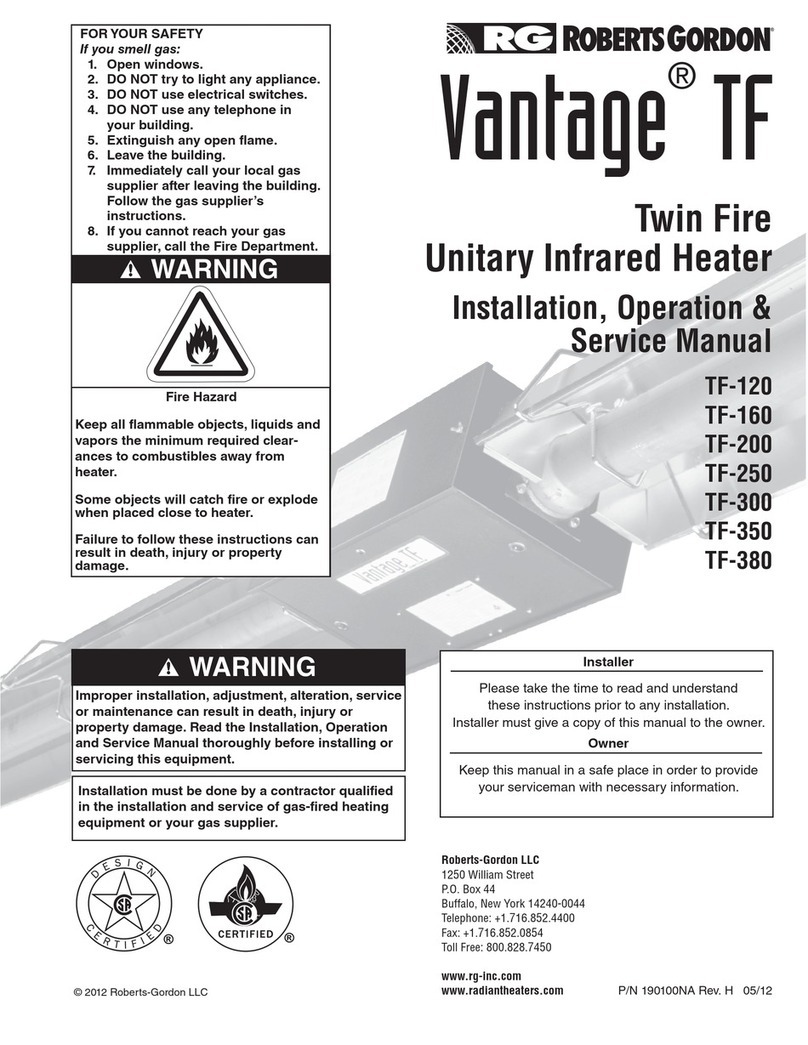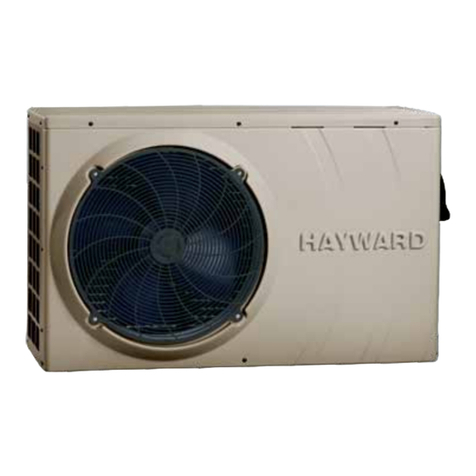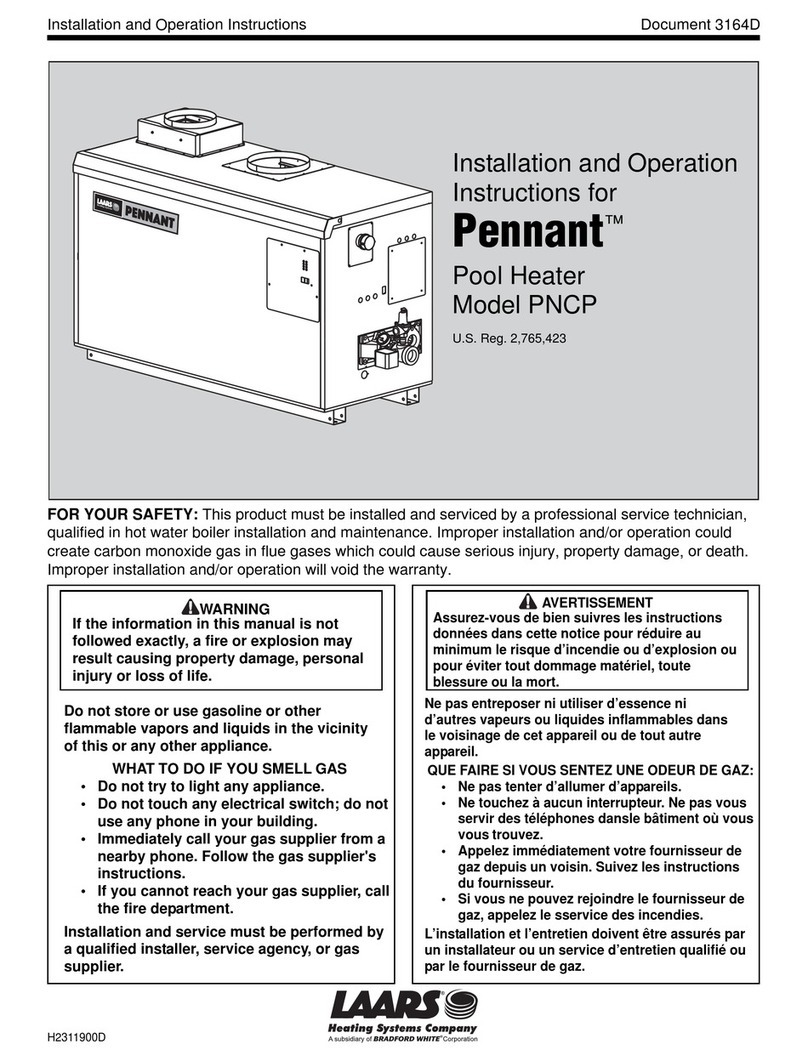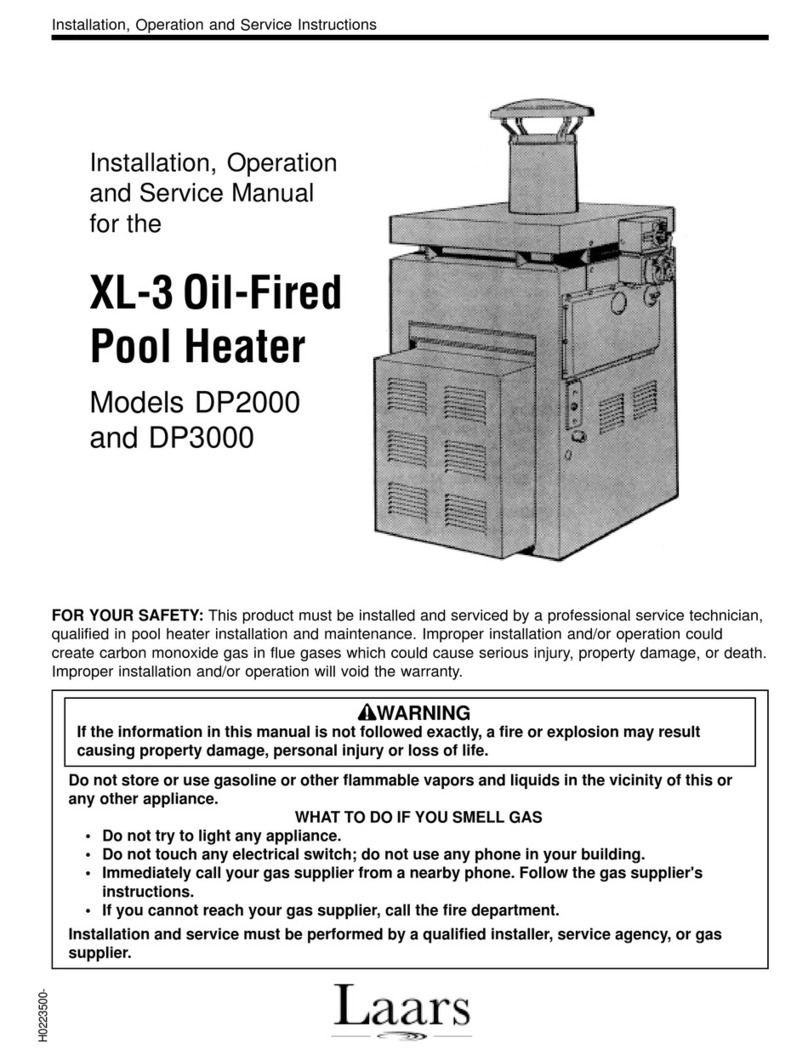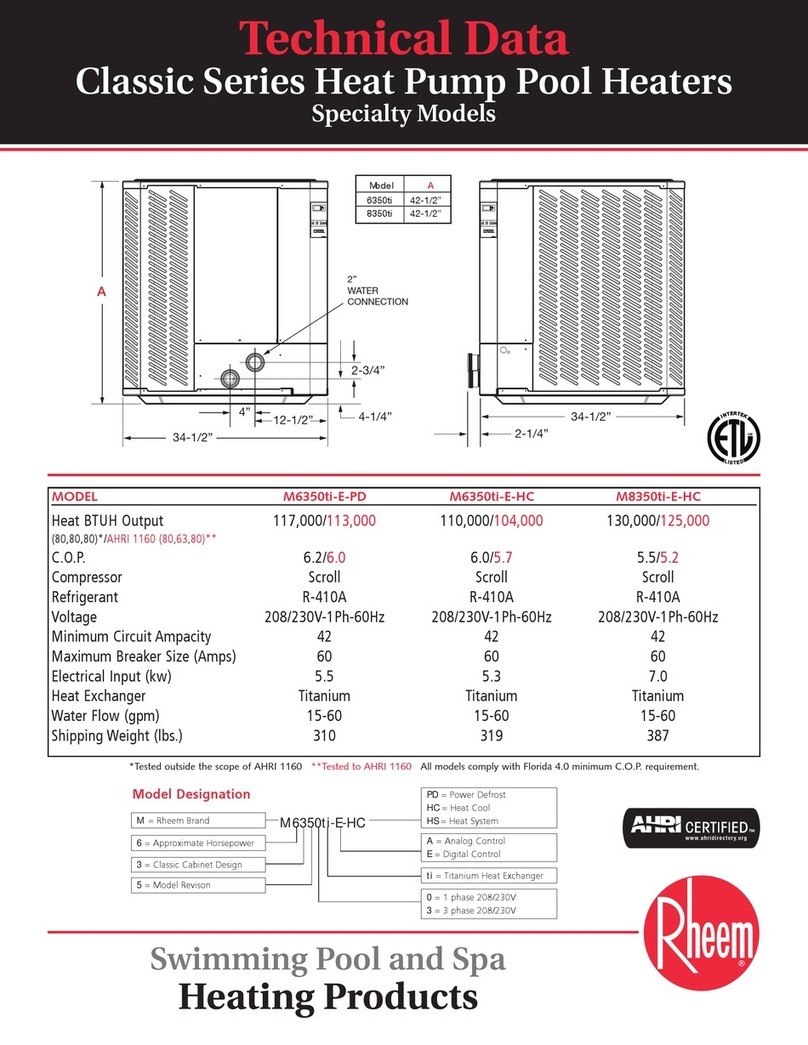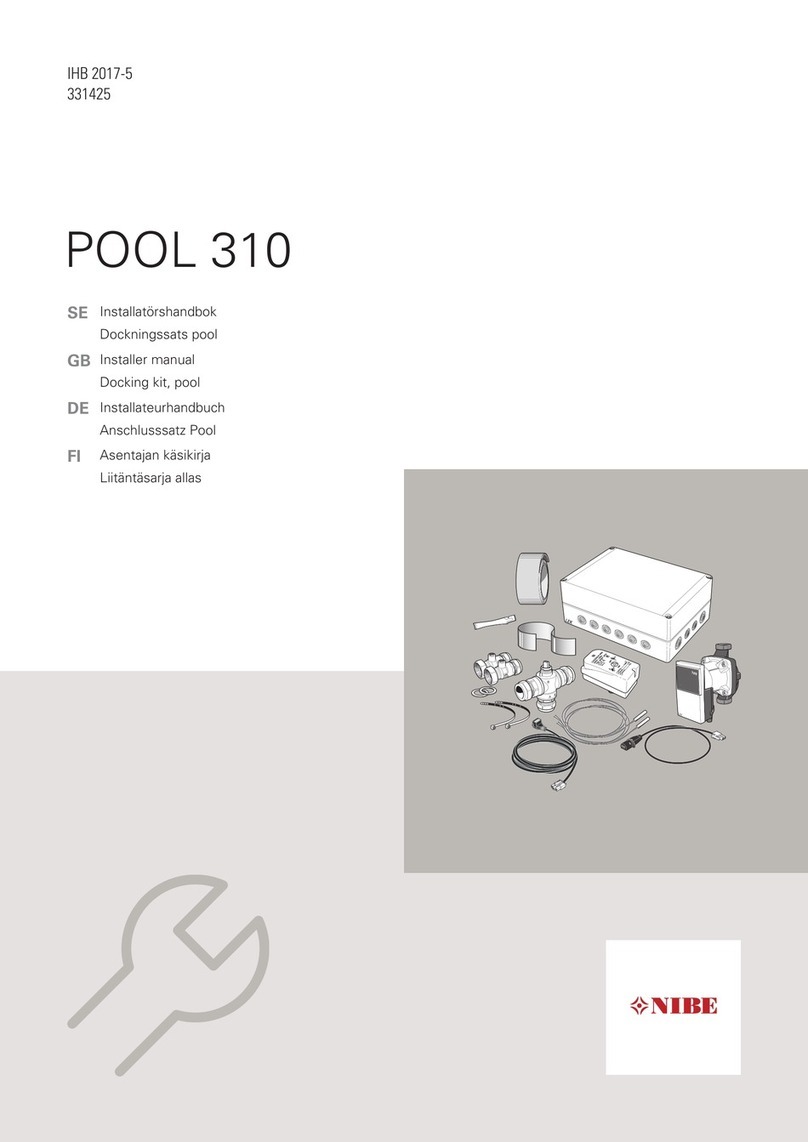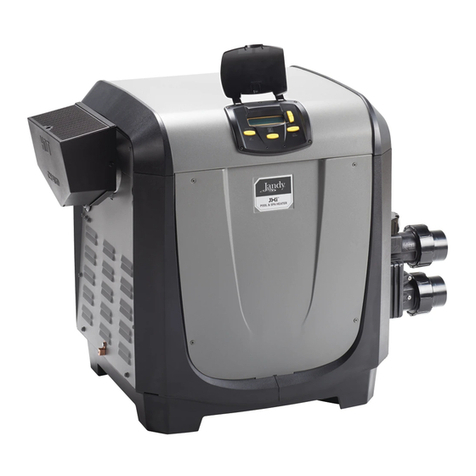
Model LC (Australia) Pool and Spa Heater Page 1
SECTION 1.
General Information
1A. Introduction
This manual provides information for the proper
installation, operation and maintenance of the Laars
Lite 2 Model LC (Australia) pool heater. The heater is
approved by the Australian Gas Association for use
with natural and propane gases. Installation should be
carried out in accordance with these instructions, the
gas authority and local government regulations.
The Installation, Operation, and Maintenance
manual must be followed exactly.
1B. Description
The Model LC (Australia) gets electrical power
from an external 240 volt (V) source. The Model LC
(Australia) provides a dual thermostat Flex-Temp
control system for pool/spa combinations or preheat
convenience. All Laars Lite 2 Model LC (Australia)
heaters meet stringent energy requirements such as
those instituted by the United States which require
intermittentignition devices.
Waterpik Technologies designed this appliance to
heat only fresh water swimming pools and spas. Do
not use it as a heating boiler or general service water
heater. For special applications, consult your Austra-
lian Waterpik Technologies dealer.
Waterpik Technologies ships the heater with the
water connections on the right side. It could be neces-
sary, or helpful, to switch the connections to the left
side to improve access for service. Instructions for
making this change can be found in Section 5. The
procedure should only be done by authorized person-
nel.
1C. Warranty
Waterpik Technologies sells the Laars Lite 2
Model LC (Australia) heater with a limited factory
warranty. A copy of the warranty is on the back cover
of this manual and is included in the plastic bag.
The home owner should fill out the warranty
registration card included in the plastic bag and return
it to the Australian distributor.
The warranty does not cover damage caused by
improper installation or field modification, or to the
heat exchanger by corrosive water. Section 3F explains
proper pool water chemistry.
SECTION 2.
Installation Instructions
WARNING
Improper installation or maintenance can
cause nausea or asphyxiation from carbon
monoxide and flue gases which could result in
severe injury or death.
2A. General
All gas-fired products require correct installation to
assure safe operation. The requirements for pool
heaters include the following:
1. Appropriate site location (clearances).
2. Noncombustiblesurface.
3. Sufficient combustion air and ventilation air.
4. Adequate venting (products of combustion).
5. Properly sized gas pipe.
6. Adequate water flow.
Install the heater at least 1.5 meters (m) from the
inside wall of the pool or spa unless it is separated
from the pool or spa by a solid fence, wall, or other
permanent barrier.
The Gas Installation Code AG601 offers general
guidelines for combustion air, ventilation air, and
flueing. Follow these guidelines to make sure the
installation is safe and efficient.
Pick a heater location that will supply enough air
for proper flue clearance, and allow space for mainte-
nance access. Recommended clearances are specified
in Section 2B and 2C.
Locate the heater in an area where condensate
leakage from the heater or connections will not damage
the area around the appliance or the structure. If such a
location cannot be avoided, install a suitable drain pan
under the heater. This pan must not restrict air flow.
Install the heater on a noncombustible surface.
That means a surface made up of steel, iron, brick, tile,
concrete, slate, glass or plaster.
You can install the heater on a combustible floor
by putting a noncombustible base under the heater. Do
not install heater on carpeting. Combustible floor is a
floor made of, or surfaced with wood, compressed
paper, plant fibres or other materials that will ignite
and burn.
It is recommended that the noncombustible base
be a platform under the heater constructed of hollow
masonry no less than 100 millimeters (mm) thick,
covered with sheet metal at least 0.75 mm thick. The
masonry must be laid with ends unsealed, and joints
matched to provide a free circulation of air from side
to side through the masonry (see Fig. 1).
